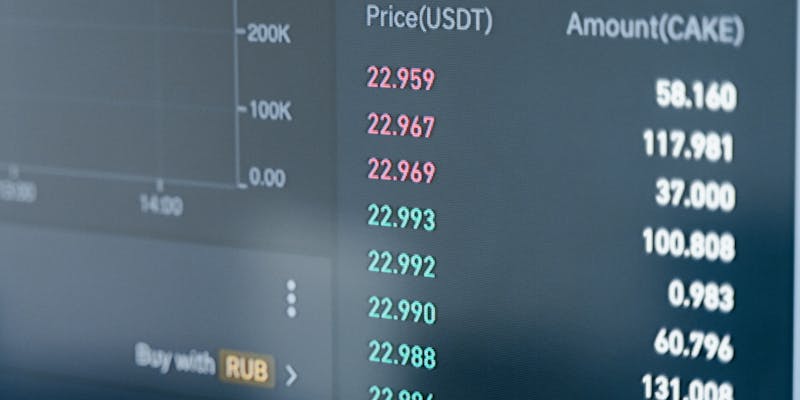Basics of Dividends
Feb 05, 2024 By Triston Martin
Dividends are the payments made by companies to shareholders. They are usually paid quarterly, maybe in dividends or cash. When a business earns a profit or gains, it may either keep the profits to reinvest into the company or distribute profits to shareholders in the form of dividends. The owners often have choices of either having dividends deposited into their brokerage accounts to make a cash payment (for income reasons), reinvesting the money, or purchasing additional shares (for growth motives).
Dividend Capture Strategy: Buying the Dividend
Certain investors try market timing strategies using mutual funds and stocks by purchasing shares before the ex-dividend date to take the dividend. They can then sell their shares within a short time after buying. This is known as the "dividend capture" strategy. In another way, an investor "buys the dividend."
The dividend capture method is risky, especially if you believe that markets are generally efficient. Also, instead of taking a hands-off approach toward the market, investors can evade dates to try dividend capture and buy the dividend. Share prices may increase before the ex-dividend date because of anticipation for the payout, and then the price can fall at or near the payment date. So it is possible that the market "priced in" the dividend, but no actual profit is realized due to a buyer's timing.
Is a Dividend Capture Strategy Profitable?
An effective dividend strategy isn't 100% reliable. In essence, what is predicted by the market so that you can increase dividend payouts? One issue with purchasing several dividends is that they may cause share prices to rise before the ex-dividend date. The prices then drop on the ex-dividend date, typically in proportion to the dividend.
It can give the illusion of financial gain if you're selling shares that you bought later at a lower price than you paid. A price differential in the range of $0.25 or $0.50 a share can make an impact on your net income from the dividends you earn. Furthermore, it is possible that the increased volatility in markets can result in the stock price dropping more than the dividend payment, which could reduce your profit margins.

It is also crucial to think about the tax consequences of dividend capture. To benefit from tax advantages for dividends, i.e., at a lower long-term capital gain tax rate, you need to keep the shares for at least 60 days within the 121-day period that begins before the date on which dividends are exempt. If you fail to do this, you'll pay the capital gains tax at a short-term rate on dividends. This is the same as your normal income tax rate.
How to Execute a Dividend Capture Strategy
The first step to purchasing dividends is determining the stocks you want. This could require a little investigation online to find the companies that pay dividends and will soon be making dividend payouts. In contrast to investing in dividends for income, you could be less concerned about the business's core values and more concerned with the amount of dividend that will be paid.
The next step would be to acquire parts of this stock before the date when the dividend is due. This is perhaps the most crucial thing to do to capture dividends. If you delay until the expiration date of the dividend to purchase shares, you will not be eligible to collect the dividend, but the owner of the shares is.
The final step is determining the best time to sell the shares you bought when the dividend is paid. Collecting the dividend may be difficult, as it is crucial to time your exit get the maximum profit. Examining the prices over time can provide an understanding of the extent to which prices will fluctuate before and following when the dividend will be paid.
Additional Costs
The transaction costs also reduce the total realized return. Contrary to the Coke instance, the value of the shares will decrease upon the date of ex-date, however not the entire sum of the dividend. When the declaration of dividends is at 50 cents, the stock price may fall in increments of 40 cents. When excluding taxes, the dividend is only 10 cents earned per share. When the transaction costs to purchase and sell securities are equal to up to $25 in both directions, most stock must be purchased to pay for brokerage costs. To fully realize the potential of this strategy, massive positions are needed.

The gains realized from an entire dividend capture plan are generally minimal. Still, the potential losses can be significant when a negative market trend is observed during the holding time. A decline in the value of the stock at the time of ex-date that is greater than the amount of dividend could force the investor to keep the position open for a longer period, creating specific and systematic risk to the method. Unfavorable market conditions can swiftly end any potential gains from this dividend capture strategy. To minimize these risks, the strategy needs to be focused on short-term investments of blue-chip firms.

How to Learn Financial Management

Bilateral Trade Agreements and Their Importance in the World Economy

When Can You Lose Your 401(k) Rights

10 Strategies for Avoiding Taxes When Receiving a Lump Sum Pension Payment

See: How Do Dividends Affect the Balance Sheet?

What are SPACs? (Special Purpose Acquisition Company)

How Excess of Loss Reinsurance Operates in the Insurance Industry?

All You Need to Know About Unemployment

Michigan State Taxes Explained: What Every Resident Should Know

